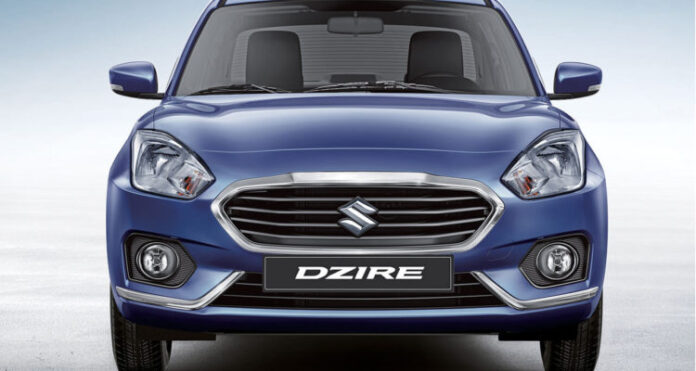While its platform-mate, the Suzuki Swift hatchback, is on its third generation here in the Philippines, the all-new Dzire subcompact sedan is only on its second. The latest versions of the two small cars were unveiled locally a few months ago.
Safe and solid construction. Both the Dzire and Swift, which have identical wheelbases, boast Suzuki’s new-generation platform, HEARTECT. The continuous frame resulting from the comprehensive overhaul of the vehicles’ underbody structure and component layout increases underbody stiffness. The highly rigid yet light body helps improve the vehicles’ dynamic performance, particularly in terms of handling and riding comfort.
The Dzire’s structure is built using Suzuki’s Total Effective Control Technology (TECT), which disperses energy to absorb impact and mitigate injury, not just in vehicular collisions, but also in cases of a pedestrian accident. It’s also equipped with dual airbags.
Much better-looking styling. While the previous Dzire was simply a Swift hatchback with an abbreviated and almost awkward-looking truck grafted onto its rear, the new model now bears styling that looks much more harmonious and unified. The new Dzire is lower and wider than the previous model. The trunk still looks a tad too short, but not as much as in the previous model. (The trunk is now actually bigger, not just visually but also in terms of capacity.) And despite its shortness, it’s a good-looking rear with sharp lines and large LED taillights that look very upscale, especially when lit at night.
More importantly, from many angles, the new Dzire actually looks good. The front and front-three quarter angles are its best views. The expressive headlamps, large chrome-trimmed grille, and graceful front fender curvature are reminiscent of those of current Maseratis. Blue has always been Maserati’s signature color, and it is almost no surprise that Suzuki used blue—Premium Oxford Blue, to be exact—as its launch color.
Well-crafted interior. You won’t mistake the Dzire’s silver-accented cabin for a luxury car’s, but it’s no penalty box either. In fact, it’s got one of the better-looking interiors in the subcompact sedan class. Overall space is surprisingly generous given the car’s tidy exterior dimensions. The driver enjoys an ergonomically arranged dashboard and a flat-bottom steering wheel. Rear seat passengers are often given the short end of the stick but not in the Dzire. They’ve got a dedicated AC blower, a 12V adaptor, adjustable headrests, and a foldable center armrest. Rear legroom, while not class-leading, is certainly not bad. There is also a seven-inch four-speaker touchscreen multimedia (Bluetooth/USB/Aux) infotainment system. And like most Japanese cars, there’s a thoughtful amount of storage areas sprinkled around the cabin.
Above-average driving dynamics. The Dzire comes with a small 1.2-liter four-cylinder engine that generates 82hp and 113Nm of torque. It rides on front MacPherson starts and a rear torsion beam. There are hardly the stuff that car guys’ dreams are made of. But driving the Dzire is an eye-opener. It certainly won’t make you long for lapping sessions at Clark Speedway, but it’s got plenty of zip while sipping fuel.
Ride quality is also very impressive. The suspension feels much better sorted out compared to its Korean rivals—something the Japanese have always had an advantage over. Handling is responsive and has good feedback despite the use of an electric power steering system. Riding comfort is likewise excellent for a car of its size.
A different gearbox. The new Dzire uses Suzuki’s Auto Gear Shift (AGS) technology, which combines the fuel efficiency of a manual transmission and convenience of an automatic. AGS technology is an automated manual transmission featuring an Intelligent Shift Control Actuator that automatically operates the clutch and shifting operation. There is no longer a clutch pedal nor a traditional manual gearshift lever. The gearshift lever gate looks more like an automatic car’s, so the driver just needs to place the lever in D or R to get the car moving forwards or backwards.
It’s brilliant in principle—and similar to Ford’s much-maligned Dual Clutch Transmission—and works fine in most situations. However, there are still times when you wish the system had shifted earlier or later—or smoother. I’d still rather have a traditional automatic or even a CVT.
The first time I used the Dzire, I was surprised to find no P position for the gear lever, which is where you’d normally leave the lever in when you park in an automatic. You also cannot leave it on D or R (I usually leave the car in gear, especially when I park the car on an incline to help prevent it from rolling in case the handbrake fails.) The Dzire will only let you park the car in N or neutral.
For those who’d rather do the shifting themselves, the new Dzire also comes with a traditional manual in the handsomely priced P638,000 GL MT base model. Our more feature-packed GL+AGS test unit comes in at a still high-value P698,000.
VERDICT
The all-new Dzire is a solid subcompact contender and gives Suzuki a two-pronged attack in the subcompact wars. While the bigger, roomier, and more expensive Suzuki Ciaz takes on the Toyota Vios, Honda City, Hyundai Accent, and Nissan Almera, the Dzire/Swift twins take on the fast-selling Mirage (which is the only other model in the Dzire’s price range that also comes as a hatchback and a sedan). Suzuki is on a solid course.
SPECIFICATIONS
Engine: 82hp/113Nm 1.2-liter 16-valve VVT inline-4
Transmission: 5-speed automated clutch-less
Drive: Front
Suspension (F/R): McPherson struts/Torsion beam
Tires: 185/65R-15
Brakes (F/R): Ventilated disc/drums
L x W x H (mm): 3,995 x 1,735 x 1,515
Wheelbase (mm): 2,450
Price: P698,000

















